Is your GE refrigerator freezer not functioning properly?
If you’ve been experiencing a lack of coldness in your freezer, there’s no need to panic just yet. With a few simple maintenance tips and troubleshooting techniques, you can easily diagnose and address the problem.
Let’s delve into some common causes of freezer malfunction and effective solutions to get your freezer freezing again.
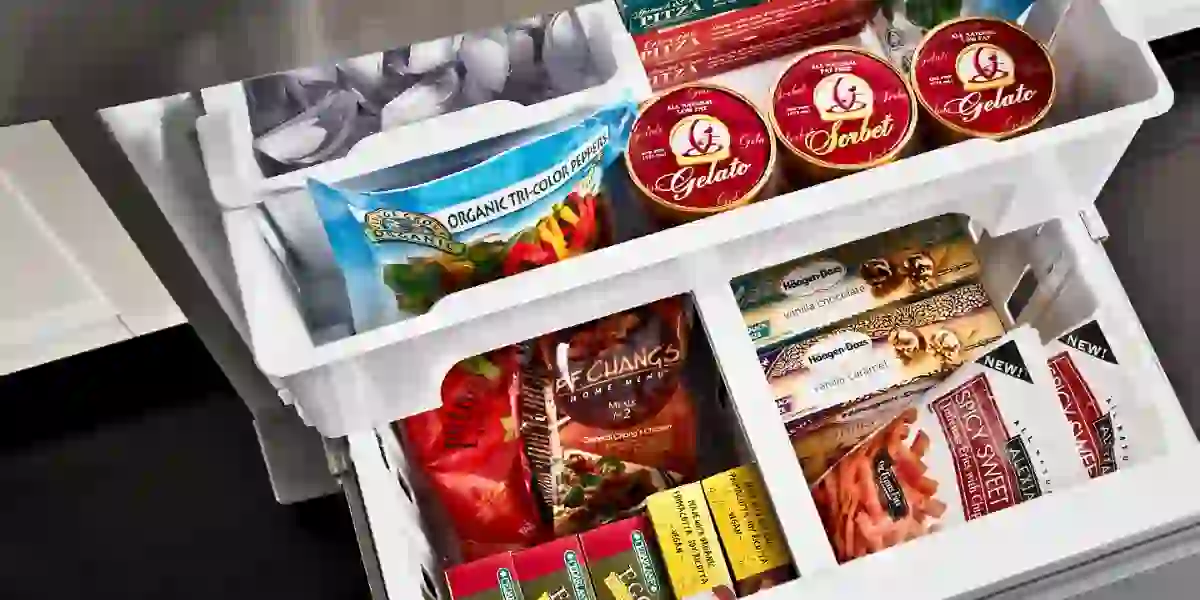
GE Refrigerator Freezer Not Working
Is your GE refrigerator freezer not working properly?
If your freezer is cold, but the fridge isn’t, it could be due to a faulty evaporator fan. To check, try turning the fan blades manually.
If they’re hard to turn, you may need to replace the motor for optimal performance.
6 Causes And Solutions: Malfunction GE Refrigerator Freezer
1. Dirty Condenser Coils
Over time, dust and dirt can accumulate on the condenser coils, restricting airflow and diminishing the cooling capacity of your freezer.
To ensure optimal performance, it’s important to clean the condenser coils every few months.
To clean the condenser coils:
- Unplug your refrigerator.
- Locate the coils, which can be at the back or near the bottom at the front, depending on your fridge model.
- If they are at the back, safely move the refrigerator away from the wall to access the coils. For front coils, unsnap the base grille covering them.
- Use a refrigerator coil brush or a vacuum hose with a soft brush head to thoroughly clean the coils.
- Once cleaned, replace the grille (for front coils), reposition the refrigerator, and plug it back in.
2. Damaged Door Seal (Gasket)
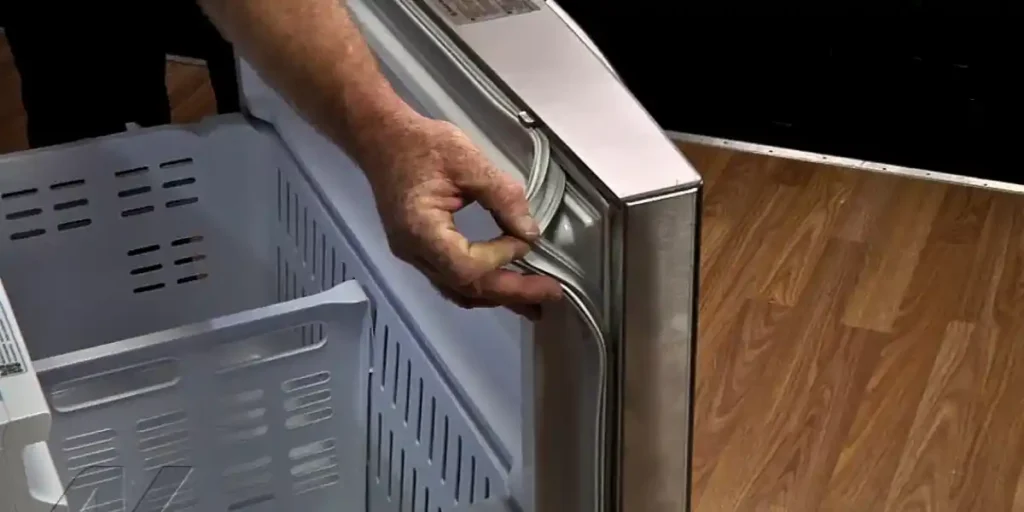
The door seal, or gasket, lines the inside perimeter of your freezer door. It plays a crucial role in keeping cold air in and warm air out.
If the seal becomes damaged or cracked, warm air can enter the freezer and hinder its cooling capabilities.
Therefore, it’s essential to inspect the door seal for any signs of damage.
To check the door seal:
Carefully examine the seal for cracks or areas where cold air may be escaping.
If you identify any damage, the seal should be replaced promptly to restore proper insulation.
3. Blocked Evaporator Fan
When your freezer is overly packed, it can obstruct the evaporator fan and impede proper air circulation.
As a result, the freezer may struggle to reach and maintain the desired temperature.
To prevent this, it’s recommended to periodically assess your freezer’s contents and discard any expired or unnecessary items.
To ensure adequate air circulation:
- Regularly check the items in your freezer and remove any that are no longer needed or have passed their expiration date.
- Organize the remaining items to ensure they are not blocking the evaporator fan or preventing the freezer door from fully closing.
4. Frost Over the Evaporator Coils
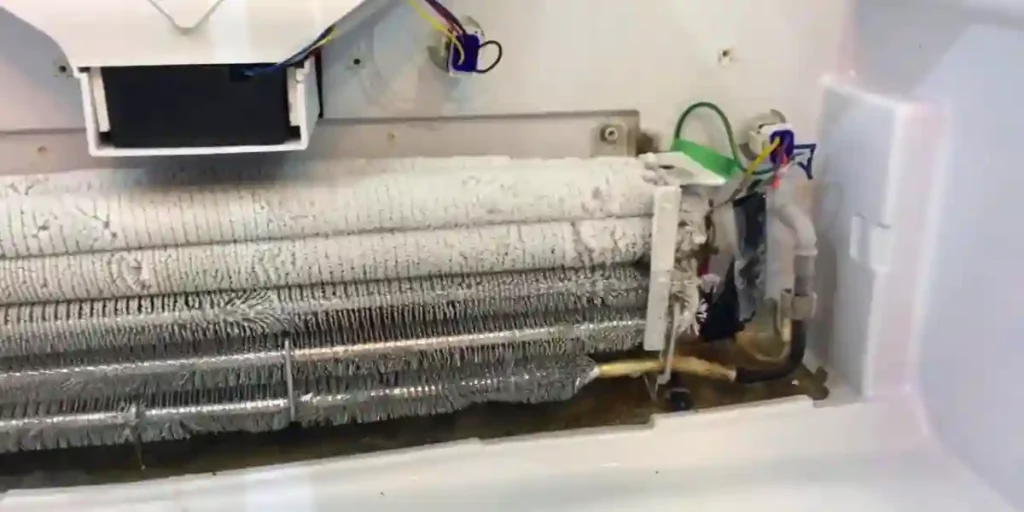
If your GE freezer accumulates excessive frost on the evaporator coils, it can hinder the cooling process.
This may occur due to a malfunctioning defrost system, such as a faulty defrost heater or defrost thermostat.
The build-up of frost prevents the proper transfer of cold air, resulting in inadequate freezing.
Defrost the Evaporator Coils
If excessive frost accumulates on the evaporator coils, you must defrost them. Unplug the freezer and allow it to thaw completely.
You can speed up the process by using a low-heat hairdryer or placing hot water bowls inside the freezer.
Once the frost has melted, clean any water residue, reconnect the power, and monitor the freezer’s performance.
5. Start Relay Issue
The start relay is responsible for initiating the compressor’s operation in your GE freezer.
When the start relay malfunctions, the compressor may fail to start, preventing the freezer from reaching and maintaining the desired freezing temperature.
A faulty start relay can result from wear and tear or electrical issues.
Fix the Start Relay Issue
To address a faulty start relay, start by disconnecting the freezer from the power supply. Locate the start relay, usually situated near the compressor, and remove it.
Replace it with a new one compatible with your GE freezer model. Reconnect the power and monitor the freezer to see if it resumes freezing properly.
6. Thermostat Issue
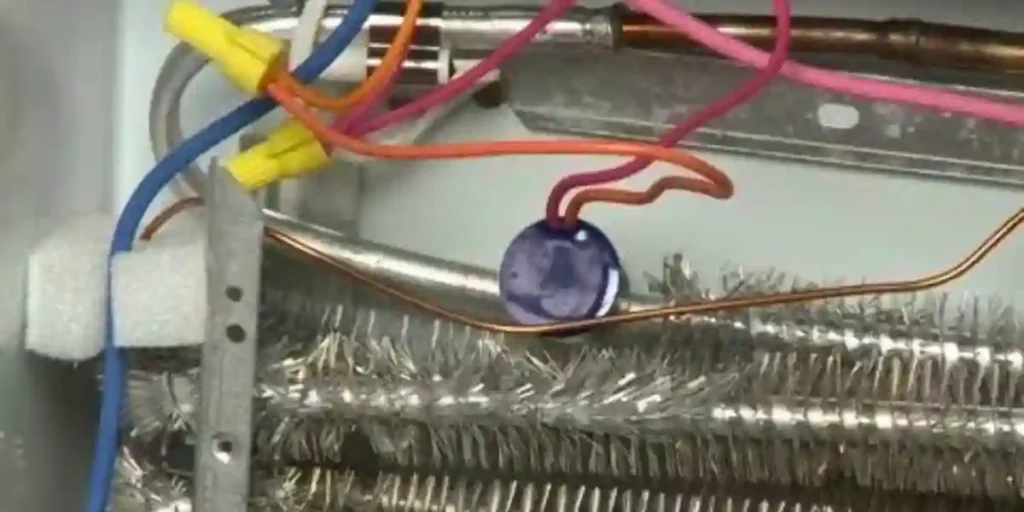
The thermostat in your GE freezer controls the temperature settings. If the thermostat is faulty or improperly calibrated, it may not signal the compressor to kick in when necessary or may not maintain the desired freezing temperature consistently.
This can result in inadequate freezing or temperature fluctuations.
Inspect the Thermostat
Check the thermostat settings and ensure they are correctly adjusted. If you suspect a thermostat issue, consider replacing it.
Consult the user manual for guidance on locating and installing a new thermostat compatible with your GE freezer model.
Expert Tips For Preventing GE Refrigerator Freezer Failures
Maintain Proper Temperature Settings
Set your GE refrigerator freezer to the recommended temperature range, typically between 0°F and 5°F (-18°C to -15°C) for the freezer compartment.
Avoid setting the temperature too low, as it can strain the system and increase the risk of freezing issues.
Similarly, setting the temperature too high can compromise the freshness and safety of your food.
Clean the Condenser Coils Regularly
The condenser coils in your GE refrigerator freezer play a vital role in dissipating heat. Over time, these coils can accumulate dust, dirt, and debris, reducing their efficiency.
To prevent this, clean the coils every six months or as recommended by the manufacturer.
Use a vacuum cleaner or a soft brush to remove any buildup, ensuring proper airflow and preventing overheating.
Avoid Overloading the Freezer
While cramming your GE freezer with all your favorite frozen treats may be tempting, overloading it can hinder its cooling performance.
Ensure enough space for air to circulate freely within the freezer compartment.
Overloading can restrict airflow and lead to uneven cooling or reduced freezing efficiency.
Check the Door Seals Regularly
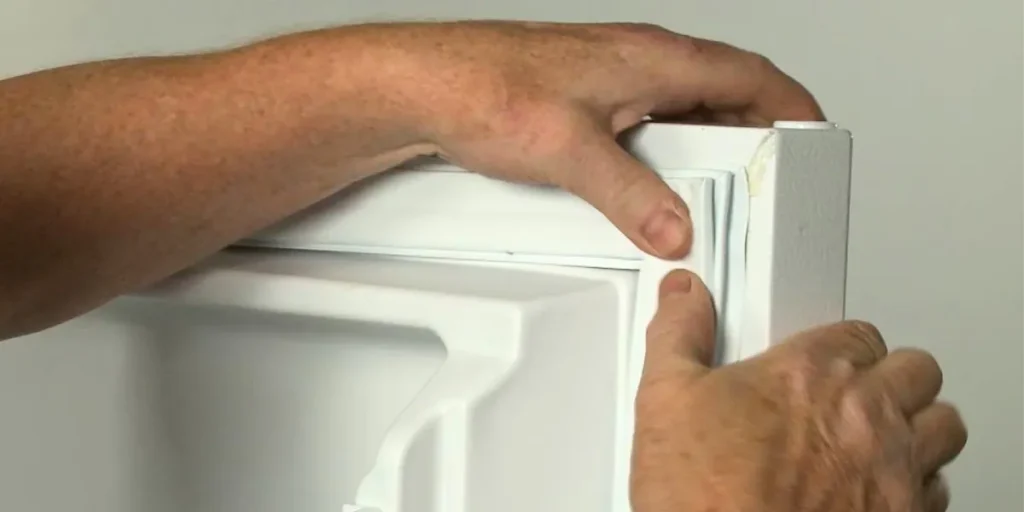
The door seals, also known as gaskets, create an airtight seal when the refrigerator freezer is closed.
Over time, these seals may wear out or become loose, allowing cold air to escape and warm air to enter.
Periodically inspect the door seals for any signs of damage, such as cracks or tears. If you notice any issues, replace the seals to maintain optimal cooling efficiency.
Clean and Defrost the Freezer When Needed
Regularly cleaning and defrosting your GE freezer helps prevent ice buildup and ensures proper airflow.
Clean the freezer’s interior with mild detergent and warm water, removing any spills or debris.
Additionally, if you notice a significant amount of frost or ice accumulation, it’s time to defrost the freezer.
Follow the manufacturer’s instructions on how to defrost your specific model.
Avoid Placing Hot Food in the Freezer
Placing hot or warm food directly into your GE freezer can increase the internal temperature, forcing the freezer to work harder to cool down.
Allow hot food to cool to room temperature before storing it in the freezer. This helps maintain a stable temperature inside the freezer and prevents unnecessary strain on the system.
Keep the Freezer Well-Organized
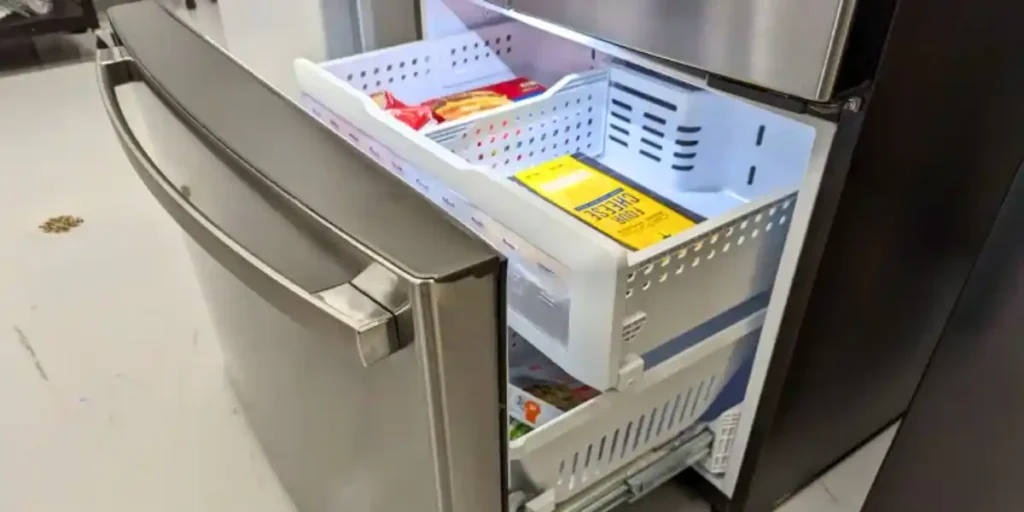
Maintaining a well-organized freezer makes it easier to find what you need and ensures proper airflow. Arrange items in a way that allows air to circulate freely.
Use labeled containers or bins to group similar items together, making it easier to access them without spending excess time with the freezer door open.
Regularly Check for Water Leaks
Periodically inspect your GE refrigerator freezer for any signs of water leaks. Water pooling inside or beneath the freezer can indicate a malfunctioning component or a blocked drain tube.
If you notice any leaks, address them promptly to prevent further damage and ensure the freezer’s proper functioning.
FAQs
What Should I Do If My GE Freezer Is Not Freezing?
Begin by checking the temperature settings to ensure they’re set appropriately. Inspect the evaporator coils for excessive frost or ice buildup and defrost them if necessary.
If the problem continues, it may be due to a faulty start relay or thermostat, requiring professional repair.
Why Is My GE Freezer Making Strange Noises?
The noisy operation could be due to a malfunctioning fan motor, a faulty compressor, or loose components.
Clean the coils and check for any loose parts. If the noise persists, consult a technician to diagnose and resolve the issue.
How Often Should I Clean The Condenser Coils?
It’s recommended to clean the condenser coils every six months to prevent dust and debris buildup. This ensures optimal airflow and efficient cooling performance.
Should I Attempt To Repair My GE Freezer Myself?
While you can perform basic troubleshooting and maintenance tasks, leaving complex repairs to trained professionals is advisable.
Attempting complex repairs without proper knowledge and experience may cause further damage or void the warranty.
Conclusion
Your GE refrigerator freezer can work like new again! Simple tasks like cleaning the condenser coils, checking door seals, or unblocking the evaporator fan might solve your problem.
If not, replacing the faulty start relay or thermostat will surely bring back the chill. Remember, maintenance is key to avoiding these issues in the future. You got this!
